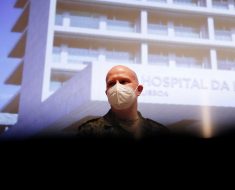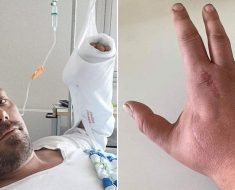In a recent study posted in the Research Square* preprint server, which is under consideration at Scientific Reports, researchers examined the detailed mechanisms of ‘cytokine storm’ that induces acute respiratory distress syndrome (ARDS), often resulting in the death of severely ill coronavirus disease 2019 (COVID-19) patients.
 Study: Antibody-Dependent Enhancement of IL-6 Production by SARS-CoV-2 Nucleocapsid Protein. Image Credit: Maryna Olyak/Shutterstock
Study: Antibody-Dependent Enhancement of IL-6 Production by SARS-CoV-2 Nucleocapsid Protein. Image Credit: Maryna Olyak/Shutterstock
Past studies have shown the involvement of cytokines, such as interleukin (IL)-6, in the ARDS due to severe acute respiratory syndrome coronavirus 2 (SARS-CoV-2) infection. Additionally, studies have shown the presence of IL-6-producing CD14+CD16+ monocytes in the peripheral blood of COVID-19 patients in intensive care units compared to COVID-19 patients who did not need hospitalization.
Monocytes are often the first cells of the immune system to contact any viral pathogen, including SARS-CoV-2. However, the detailed mechanisms of the expression of IL-6 in peripheral monocyte-derived macrophages (MDM) infected with SARS-CoV-2 remain unclear.
About the study
In the present study, researchers added the freeze/thawed lysate of SARS-CoV-2-infected cells to cultured macrophages (MDM) or into pluripotent myeloid cells to mimic SARS-CoV-2-infection in alveoli, following which these cells secreted IL-6. They studied the underlying mechanisms controlling IL-6 expression in peripheral monocyte-derived macrophages (MDM) infected with SARS-CoV-2. They also demonstrated that anti-nucleocapsid (N) antibodies enhanced nucleocapsid (N) protein-mediated induction of IL-6.
Study findings
While examining the effects of SARS-CoV-2-infected cells on MDM (as a model of SARS-CoV-2 infection in alveoli), lysates of transmembrane serine protease 2 (TMPRSS2)/VeroE6 cells infected with SARS-CoV-2 were added to MDM together with SARS-CoV-2.
Despite the fact that the levels of SARS-CoV-2 RNA decreased over time, the authors noted elevated levels of IL-6 in the supernatants of MDM incubated with SARS-CoV-2-infected cell lysate, but not in those with uninfected cell lysate. Interestingly, three different strains of SARS-CoV-2 isolates were able to induce IL-6 production by MDMs.
Testing myelomonocytic leukemia cells (K-ML2) cells as a substitute for MD, the authors noted that SARS-CoV-2-infected cell lysates induced IL-6 production from K-ML2 cells, suggesting a specific component of SARS-CoV-2-infected cells stimulated MDM and K-ML2 cells to produce IL-6.
Screening of SARS-CoV-2 protein-expressing plasmids transfected into derivative of human embryonic kidney 293 cells containing the SV40 T-antigen (293T cells) revealed that SARS-CoV-2 N protein, including recombinant N protein, induced IL-6 production more efficiently than SARS_CoV-2 spike (S) protein. Further, using plasmids encoding truncated versions of the N protein, authors were able to identify that the C-terminal domain (CTD) of the N protein was responsible for IL-6-inducing activity.
In the culture supernatants of both granulocyte-macrophage colony-stimulating factor (GM-CSF)-stimulated and macrophage colony-stimulating factor (M-CSF)-stimulated MDM, two days after N protein stimulation, assay results showed elevated levels of multiple cytokines. All these cytokines, including IL-6, IL-8, tumor necrosis factor (TNF-α), macrophage inflammatory protein-1 beta (MIP-1β), pentraxin-3, and thymic stromal lymphopoietin (TSLP), elevate during severe COVID-19.
In GM-CSF-stimulated MDM, an N protein-induced increase in IP-10, a predictive marker for severe disease in COVID-19, was observed, indicating that MDM can be a source of cytokines in COVID-19 patients even without productive infection of SARS-CoV-2.
Upon transfecting N protein-containing K-ML2 cells with serially diluted patient sera from actual SARS-CoV-2 patients, although 0.01–10% of the COVID-19 patient sera enhanced the IL-6 production, sera from five healthy donors did not affect the IL-6 production.
Further, when researchers evaluated 203 serum samples from mild, moderate, and severe COVID-19 cases, they observed that sera of severe patients induced significantly more IL-6 than others; likewise, anti-N antibodies levels were elevated.
Conclusions
The study demonstrated that SARS-CoV-2-infected epithelial cells induced IL-6 production via bystander macrophages or myeloid cells (due to the presence of SARS-CoV-2 N protein). Thus, COVID-19 symptoms rapidly worsen in some cases from five to eight days of the symptom onset, and anti-N antibodies enhance this phenomenon.
The results showed that the proposed mechanism for the antibody-dependent enhancement (ADE) of IL-6 production from macrophages could occur without actual productive SARS-CoV-2 infection. The study, thus, provided evidence for relatively lesser efficacy of the inactivated whole viruses-based COVID-19 vaccines than messenger ribonucleic acid (mRNA)-based vaccines, such as the widely used Moderna vaccine.
Regarding the COVID-19 treatment, steroids, anti-IL-6 receptor antibodies are recommended to suppress excessive immune responses. Five anti-N antibodies, including N1, N4, N5 N9, and N12 may be useful as novel treatment strategies for COVID-19, although this is possible only when future research establishes COVID-19 treatments based on IL-6 suppression.
*Important notice
Preprints with Research Square publishes preliminary scientific reports that are not peer-reviewed and, therefore, should not be regarded as conclusive, guide clinical practice/health-related behavior, or treated as established information.
-
Nakayama, E. et al. (2022) "Antibody-Dependent Enhancement of IL-6 Production by SARS-CoV-2 Nucleocapsid Protein". Research Square. doi: 10.21203/rs.3.rs-1320609/v1. https://www.researchsquare.com/article/rs-1320609/v1
Posted in: Medical Science News | Medical Research News | Disease/Infection News
Tags: Acute Respiratory Distress Syndrome, Antibodies, Antibody, Antigen, Assay, Blood, Cell, Coronavirus, Coronavirus Disease COVID-19, covid-19, Cytokine, Cytokines, Efficacy, Immune System, Intensive Care, Interleukin, Kidney, Leukemia, Lysate, Macrophage, Monocyte, Necrosis, Pathogen, Protein, Receptor, Research, Respiratory, Ribonucleic Acid, RNA, SARS, SARS-CoV-2, Serine, Severe Acute Respiratory, Severe Acute Respiratory Syndrome, Syndrome, Tumor, Tumor Necrosis Factor, Vaccine

Written by
Neha Mathur
Neha Mathur has a Master’s degree in Biotechnology and extensive experience in digital marketing. She is passionate about reading and music. When she is not working, Neha likes to cook and travel.
Source: Read Full Article




